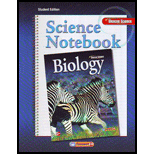
Concept explainers
To organize:
The information about roundworms by filling in chart.
Introduction:
Roundworms are the most commonly found
Answer to Problem 5MI
The information about roundworms is given in the table below:
| Phylum: Nematoda | Symmetry: Bilateral |
| Habitats:
Cosmopolitan in distribution. They are present everywhere from marine and freshwater habitats to land; some are parasites on plants and animals. | |
| Body shape:
They are cylindrical, unsegmented, tapered at both ends. | |
| Food:
Some roundworms are feed on tiny invertebrates, others feed on decaying plant and animal matter, some feed on living hosts. | |
| Digestive tract of free-living forms:
They eat trough mouth and wastes exiting through the anus. | |
| Circulatory and respiratory organs:
Not present, they depend on diffusion for moving nutrients and gases throughout the body. | |
| Stimuli they can detect:
They detect touch and chemicals and some can detect differences between light and dark. | |
| Reproduction method: Sexual | Type of fertilization: Internal |
Explanation of Solution
Roundworms are omnipresent. They maybe free -living, aquatic and terrestrial or parasitic on plants and animals. they are cylindrical, unsegmented, tapered at both ends and have organ-system level of body organization. They are bilaterally symmetrical and triploblastic animal. Alimentary canal is complete, at one is mouth and anus on the other end with a well developed muscular pharynx. circulatory and respiratory organs are absent. the excretory waste is removed from the body cavity through the excretory pore. They can can detect touch and
Chapter 25 Solutions
Biology Science Notebook
Additional Science Textbook Solutions
Campbell Essential Biology with Physiology (5th Edition)
Campbell Biology (11th Edition)
Human Physiology: An Integrated Approach (8th Edition)
Brock Biology of Microorganisms (14th Edition)
 Human Anatomy & Physiology (11th Edition)BiologyISBN:9780134580999Author:Elaine N. Marieb, Katja N. HoehnPublisher:PEARSON
Human Anatomy & Physiology (11th Edition)BiologyISBN:9780134580999Author:Elaine N. Marieb, Katja N. HoehnPublisher:PEARSON Biology 2eBiologyISBN:9781947172517Author:Matthew Douglas, Jung Choi, Mary Ann ClarkPublisher:OpenStax
Biology 2eBiologyISBN:9781947172517Author:Matthew Douglas, Jung Choi, Mary Ann ClarkPublisher:OpenStax Anatomy & PhysiologyBiologyISBN:9781259398629Author:McKinley, Michael P., O'loughlin, Valerie Dean, Bidle, Theresa StouterPublisher:Mcgraw Hill Education,
Anatomy & PhysiologyBiologyISBN:9781259398629Author:McKinley, Michael P., O'loughlin, Valerie Dean, Bidle, Theresa StouterPublisher:Mcgraw Hill Education, Molecular Biology of the Cell (Sixth Edition)BiologyISBN:9780815344322Author:Bruce Alberts, Alexander D. Johnson, Julian Lewis, David Morgan, Martin Raff, Keith Roberts, Peter WalterPublisher:W. W. Norton & Company
Molecular Biology of the Cell (Sixth Edition)BiologyISBN:9780815344322Author:Bruce Alberts, Alexander D. Johnson, Julian Lewis, David Morgan, Martin Raff, Keith Roberts, Peter WalterPublisher:W. W. Norton & Company Laboratory Manual For Human Anatomy & PhysiologyBiologyISBN:9781260159363Author:Martin, Terry R., Prentice-craver, CynthiaPublisher:McGraw-Hill Publishing Co.
Laboratory Manual For Human Anatomy & PhysiologyBiologyISBN:9781260159363Author:Martin, Terry R., Prentice-craver, CynthiaPublisher:McGraw-Hill Publishing Co. Inquiry Into Life (16th Edition)BiologyISBN:9781260231700Author:Sylvia S. Mader, Michael WindelspechtPublisher:McGraw Hill Education
Inquiry Into Life (16th Edition)BiologyISBN:9781260231700Author:Sylvia S. Mader, Michael WindelspechtPublisher:McGraw Hill Education





